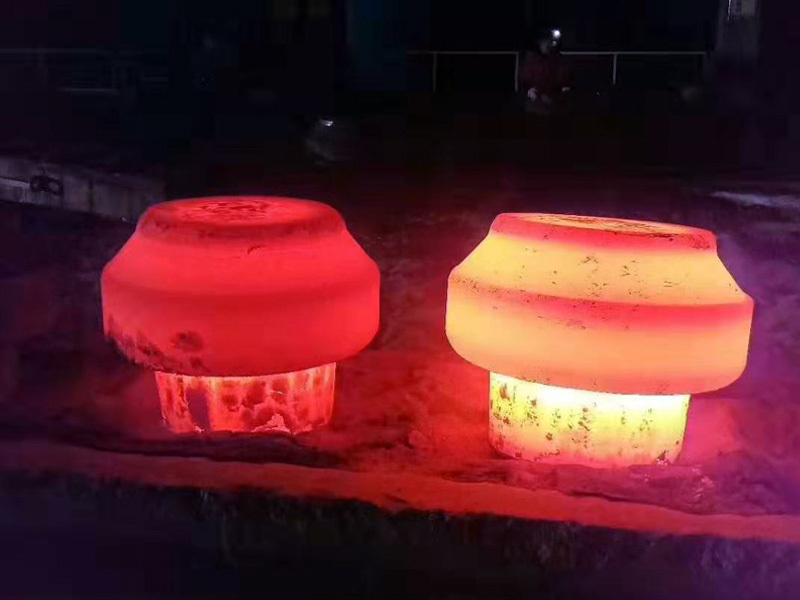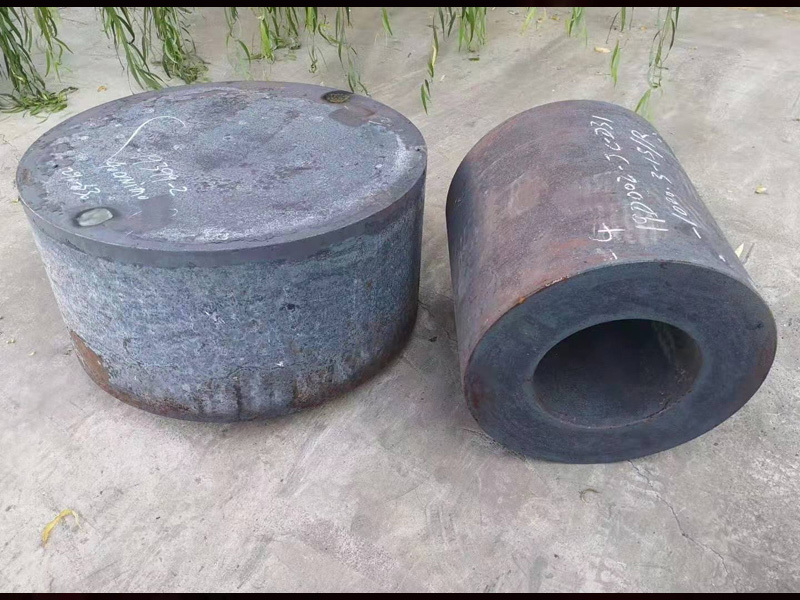Forging materials are mainly carbon and alloy steels of various compositions.
Release time:
2024-03-29
Forging materials are mainly carbon steel and alloy steel of various components, followed by aluminum, magnesium, copper, titanium and their alloys. The original state of the material is bar stock, ingot, metal powder and liquid metal. The ratio of the cross-sectional area of the metal before deformation to the cross-sectional area after deformation is called the forging ratio. The correct choice of forging ratio, reasonable heating temperature and holding time, reasonable initial forging temperature and final forging temperature, reasonable deformation and deformation speed have a great relationship to improve product quality and reduce costs.

Forging materials are mainly carbon steel and alloy steel of various components, followed by aluminum, magnesium, copper, titanium and their alloys. The original state of the material is bar stock, ingot, metal powder and liquid metal. The ratio of the cross-sectional area of the metal before deformation to the cross-sectional area after deformation is called the forging ratio. The correct choice of forging ratio, reasonable heating temperature and holding time, reasonable initial forging temperature and final forging temperature, reasonable deformation and deformation speed have a great relationship to improve product quality and reduce costs.
The "simulation technology of forging process" in the above measures is detailed in the volume of "forging process simulation" in this series, and other technical measures (excluding process measures) will be described in the following sections. The process measures to be taken are described as follows:
1. Reasonable choice of blank into the furnace temperature, heating speed and holding time
For special alloys with low thermal conductivity (especially large-size blanks), they should be heated at low speed with the furnace or preheated in the furnace at 800°C ~ 850°C and kept for a period of time, instead of being directly heated in the furnace at the initial forging temperature and then heated to the initial forging temperature or the high-temperature furnace at the initial forging temperature. The holding time at the initial forging temperature depends on the alloy, generally several times longer than alloy structural steel.
Other blanks with higher thermal conductivity than steel of aluminum, magnesium and copper and their alloys can be directly heated, the heating rate can be accelerated and the holding time can be appropriately shortened.
2. Appropriate selection of deformation degree
In view of the characteristics of high alloying degree of special alloy, serious macrosegregation of ingot and forging, low plasticity and wide range of critical deformation, every fire should be strictly controlled in the forging process. Even the deformation degree of each stroke of the equipment; If the deformation degree is too large, it may crack, and if the deformation degree is too small, it may fall into the critical deformation zone, resulting in local grain growth and uneven organization.
3. Strictly control the final forging temperature
In view of the high recrystallization temperature of special alloys and the obvious tendency of cold work hardening, the final forging temperature needs to be increased or greatly increased. The final forging temperature of some alloys is even as high as 1080°C, which is about 300°C higher than that of ordinary carbon steel and low alloy structural steel.
4. Reasonable choice of forging equipment working speed
For some special alloys sensitive to strain rate and slow recrystallization speed, hydraulic press, mechanical press and screw press with low loading speed should be selected as far as possible for forging. For high-speed steel with serious mesh breakage, for thoroughly crushing mesh carbide, forging hammer with high working speed and strong impact force should be selected for forging.
5. Reasonable selection of forging equipment
For some special alloys with high deformation resistance, slow recrystallization speed and high final forging temperature, compared with carbon steel and low alloy structural steel forgings of the same size, it is necessary to select forging equipment that can be * * * or load 3 to 5 times or more.
In the same case, molybdenum, magnesium and steel and their alloys, which have low deformation resistance, require the choice of smaller equipment.
6. To protect the blank
In view of the characteristics that the surface of special alloy is easy to form alloy element depletion layer and embrittlement layer or absorb harmful gas in the heating process, under possible conditions, it should be heated in a protective atmosphere, or the blank should be protected by protective coating, for example, the blank should be coated with glass protective lubricant.
7. Double lubrication of blank and mold
In view of the characteristics of high deformation resistance of special alloys, large equipment energy (load) and narrow forging temperature range, in addition to conventional mold lubrication, the blank should also be protected and lubricated to minimize friction and blank temperature drop to reduce the required equipment tonnage. It is recommended to use glass protective lubricant to protect and lubricate the blank during die forging of high-temperature alloy, titanium alloy and stainless steel.
8. As far as possible to choose the process of forging in the state of compressive stress
In view of the characteristics of high alloying degree and low plasticity of special alloys, it is recommended to choose as much as possible the processes of extrusion, closed die forging, and closed upsetting and extrusion on flat forging machines under compressive stress.
9. "Strike While the Iron's Hot"
In view of the characteristics of high final forging temperature and narrow forging temperature range of special alloys, forgers are required to be skilled in operation and sensitive in response. Every link from blank tapping, transfer to forging should be rapid and accurate, and strive to shorten the forging time as far as possible to achieve the purpose of "strike while the iron is hot.
10. Strictly implement the preheating system of tools and molds
In view of the characteristics of high final silver temperature, narrow forging temperature range and low thermal conductivity of special alloy, all the clamping dies in contact with forgings should be preheated in strict accordance with the regulations.
More information








